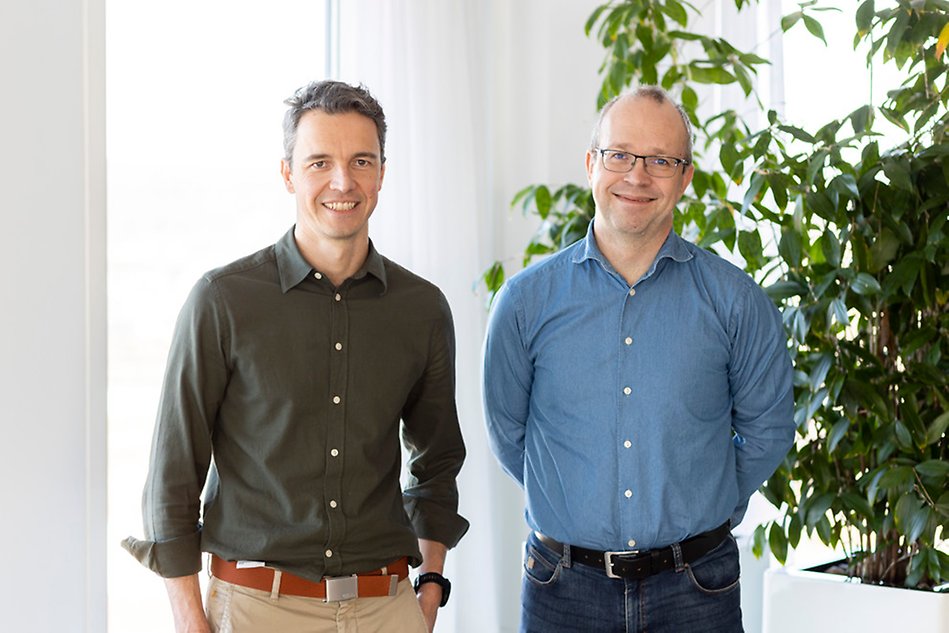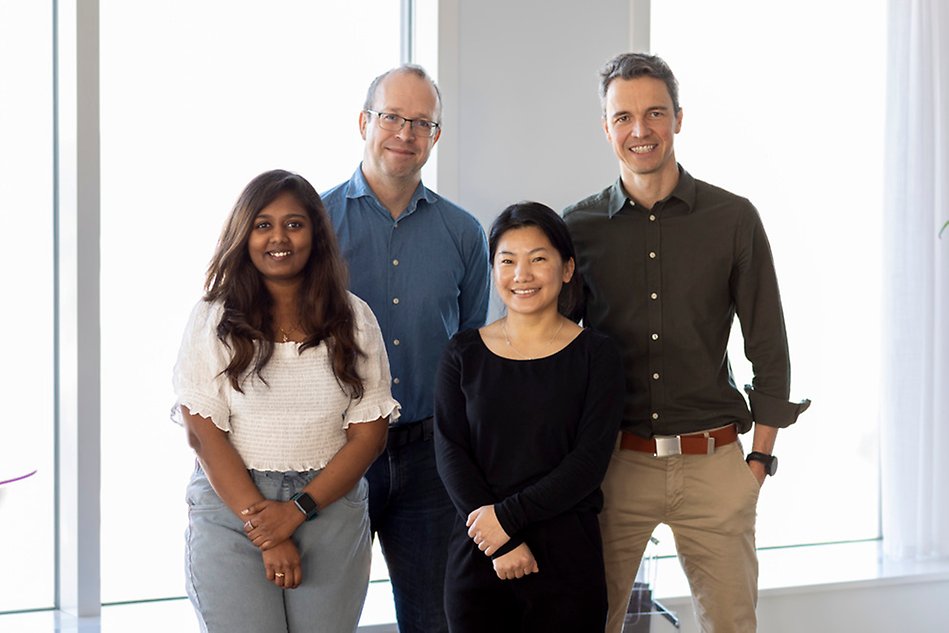AI and social media against healthcare associated infections
Can artificial intelligence (AI) help in the fight against healthcare associated infections? Patients being infected with diseases while staying at hospitals is a global issue. A group of researchers at Halmstad University are examining whether machine learning can help find solutions for healthcare associated infections – on social media.

One of the biggest issues in hospitals around the world are healthcare associated infections (HAI) – in other words, when people who enter the hospital to receive care for one disease end up infected with another one. During the Covid-19 pandemic, for example, a lot of people who were hospitalised for other reasons, ended up being infected with the corona virus while at the hospital.
At the same time, the world is full of healthcare workers with innovative ideas that could provide solutions to the issue with healthcare associated infections. This is why a group of researchers at Halmstad University, in collaboration with health and hygiene company Essity, are examining whether automatic idea detection (AID) can help detect good ideas that can prevent or control HAIs.
A fifth of all hospital beds filled with HAI patients
The project “Automatic idea detection: Implementing artificial intelligence in medical technology innovation” is being led by Fábio Gama, Senior Lecturer in Healthcare Innovation at Halmstad University, who is collaborating with, among others, Håkan Lindström, Global Technical Innovation Manager at Essity.
“In the Western world, around 5–15% of all patients become infected with HAIs. For many, this involves fever, nausea and a prolonged hospital stay, but for the most vulnerable patients, a HAI can have considerably more serious consequences. Healthcare associated infections can also have a big impact on the national economy – a recently published study from England shows that up to 20% of all hospital beds are filled with patients with HAIs”, says Håkan Lindström.

Fábio Gama, Senior Lecturer in Healthcare Innovation, and Håkan Lindström, Global Technical Innovation Manager at Essity, are both participating in the project.
About the project
Project period:
- April 2021 to March 2024
Financier:
- The Knowledge Foundation
Project manager:
- Fábio Gama, Senior Lecturer in Healthcare Innovation, Halmstad University
Other participating researchers:
Halmstad University
- Peyman Mashhadi, Senior Lecturer in Machine Learning
- Mahmoud Rahat, Associate Senior Lecturer in Natural Language Processing
- Jens Nygren, Professor in Health Innovation
- Magnus Holmén, Professor in Business model
- Slawomir Nowaczyk, Professor in Machine Learning
- Carina Göransson, Senior Lecturer in Healthcare
Participating students:
Halmstad University
- Hanna Johnsson, Master Student
- Chaithanya Anjanappa, Master Student
- Manisha Gurung, Master Student
- Maj-Britt Voldby, Master Student
Other universities
- Amir Gharaie, PhD Student, Linköping University
- Zahra Kharazian, PhD Student, Stockholm University
Project partners:
Essity
- Håkan Lindström, Global Technical Innovation Manager
- Peter Blomström, Global Brand Service Director
Region Västerbotten
- Jens Backman, Clinician
Accepted papers:
- Gama, F., & Magistretti, S. (2023). “Lost in Red Tape? Conforming Medical Device Developments to Adaptive Regulations.” IAMOT 2023.
- Gama, F., & Holmén, M. (2022). “Ideation and Machine Learning: Problem Finding in Disruptive Innovation.” R&D 2022 Management Conference, June 9–13, Trento. RADMA, Research and Development Management.
- Gama, F., Florén, H., & Sjödin, D. (2021). “Artificial Intelligence Capabilities as Enablers for Digital Innovation Processes: A Systematic Literature Review.” R&D 2021 Management Conference, June 9–13, Digital Conference. RADMA, Research and Development Management.
- Kharazian, Z., Rahat, M., Gama, F., Mashhadi, P.S., Nowaczyk, S., Lindgren, T., & Magnusson, S. (2023). “AID4HAI: Automatic Idea Detection for Healthcare-Associated Infections (HAIs) from Twitter, A Framework based on Active Learning and Transfer Learning.” Symposium on Intelligent Data Analysis (IDA).
Hand hygiene needs improvement
“Many companies and hospitals are understandably very concerned about this – they can close entire departments if there is an infection going around”, says Fábio Gama, who has a background in engineering and product development of medical devices.
Fábio Gama continues: “One of the ways to mitigate this issue is with better hand hygiene. The compliance with hand hygiene recommendations is not substantial enough. It’s very interesting because we know that people know what to do, but for different reasons, there are times when the protocols are not being followed. It could for example be due to work overload, or simply forgetting.”
“This is a systematic error where no individual is to blame. But there is need for improvement, nonetheless. That is why we and other companies are looking for ways to help the healthcare sector to get even better”, says Håkan Lindström.
Finding the needle in the haystack using AI
“Our starting point is pretty humble”, Håkan Lindström continues. “The world is full of clever people with clever ideas, and rather than reinventing the wheel, we wanted to focus on finding ideas that already exist. There are plenty of nurses in the world, for example, and chances are that they are sharing their clever ideas – we just haven’t been able to hear about them.”
“Our starting point is pretty humble. The world is full of clever people with clever ideas, and rather than reinventing the wheel, we wanted to focus on finding ideas that already exist.”
Håkan Lindström,
Global Technical Innovation Manager at Essity
“This is where artificial intelligence comes into the picture”, says Fábio Gama. “In this project, we have turned to social media to see what healthcare workers around the world are trying to do and communicate – and if maybe they are using some new methods to control or prevent HAIs. With AI, we can find the needle in the haystack.”
Fábio Gama explains that a way to detect innovative healthcare practices is to screen online platforms to identify new solutions. Artificial intelligent models can screen vast amounts of information and automatically detect user‐contributed ideas – this system is called automatic idea detection (AID).
“For this study, we have chosen to focus on Twitter and tweets in English, but the model can just as well be used on other platforms and for many other types of problems and languages”, says Mahmoud Rahat, Associate Senior Lecturer in Natural Language Processing, who is supervising the development of the new AI model used in the project.
Many students involved
A large number of people are working with the project, and several master and PhD students are involved.
Zahra Kharazian, now a PhD Student at Stockholm University, did her master’s thesis about the project at Halmstad University. Her role was, among other things, to implement the codes and label the tweets provided by AID as informative or non-informative.
“We searched Twitter for HAI-related themes and collected about 4.5 million tweets. Despite this large number, it has been hard to find informative ideas, which led to the decisions of the AI model to be biased towards non-informative tweets. To counteract this, we used an iterative method that optimises the labelling process and also asked human annotators to label the ideas, and selected samples were then used for retraining the AI model”, Zahra Kharazian explains.
Chaithanya Anjanappa, master student, has also been involved in developing the AI model. She hopes that it can contribute with novel solutions to the machine learning field.
Meanwhile, master student Manisha Gurung’s role is that of an annotator.
“I have had a few training sessions with my team to learn how to sort the ideas. If a tweet concerns hand hygiene or infection control, it is labelled as informative, and if not, as non-informative”, Manisha Gurung says.

Håkan Lindström and Fábio Gama with Chaithanya Anjanappa and Manisha Gurung, two of several master students who have participated in the project.
“AI is like a small child that you have to teach to crawl and walk, and that is what we have been doing so far – now, we would like to see the child start to run.”
Fábio Gama,
Senior Lecturer in Healthcare Innovation
Interested in using GPT-3 going forward
“When we started this project, we had two questions. How do you define a good idea? And can you train a computer to find good ideas amongst millions of tweets?” Håkan Lindström says. “Thanks to the team in Halmstad, we can say ‘yes’ to the second question. The challenge that remains is how to define a good idea. During this project we developed several methods, and I think that we have gotten slightly closer to an answer.”
When asked what the next step might be, Fábio Gama says that it comes down to resources:
“We would love to share this knowledge with other projects – there are so many more things we could do if we for example could convince healthcare associations to share their data with us. It would also be great if this project could make it possible to identify and create solutions to improve hand hygiene compliance. In order to do so, we need to keep working on improving the algorithm.”
“Going forward, we are looking at the possibility of using parts of the AI model GPT-3, since there have been some big improvements compared to the model that we used in the first phase”, says Mahmoud Rahat, and refers to the model that is most famously associated with the new chatbot ChatGPT.
“AI is like a small child that you have to teach to crawl and walk, and that is what we have been doing so far – now, we would like to see the child start to run”, Fábio Gama concludes.
Text and portait photos: Emma Swahn
Stock photo: iStock
More information
Research at the School of Business, Innovation and Sustainability
Guest JF, Keating T, Gould D, et al. “Modelling the annual NHS costs and outcomes attributable to healthcare-associated infections in England.” BMJ Open 2020;10:e033367. doi: 10.1136/bmjopen-2019-033367 External link..
External link..
På svenska
AI och sociala medier i kampen mot vårdrelaterade infektioner External link, opens in new window.
External link, opens in new window.
PUBLISHED
Contact
-
No valid user selected.
Share

